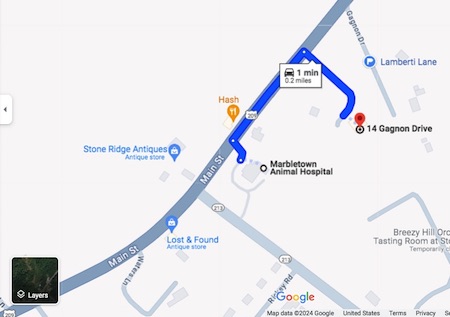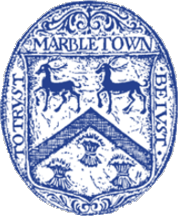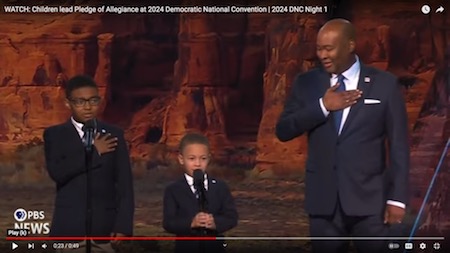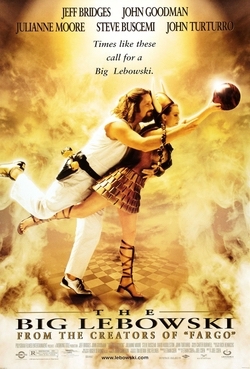
Dog Day Afternoons
In preparation for the “heat dome” predicted to start on Father’s Day, June 16, and expected to last for at least a week, we prepped as follows:
- laid in a supply of food and bottled water (the water from our well is too hard for drinking or cooking, though fine for washing, etc.);
- bought a 20-lb. bag of bird food for our resident feathered (and some smaller furred) cohabitants;
- installed our two existing energy-efficient air conditioners (one Kenmore, one GE) in my office and our bedroom;
- bought a “new” (refurbished) Midea energy-efficient air conditioner for Jacky’s bedroom;
- double-checked all our ceiling fans — we have one in every room — to make sure we had them all set for counter-clockwise summer operation.
We skipped any energetic gardening for the duration of the heat wave, instead just watering to keep our fruit trees and berry bushes and veggies from dying. And we set out some bowls and troughs of water for the local wildlife.
Long story short, we survived that weather event without suffering. And we’ve found ourselves comfortable indoors for the rest of the summer so far. Anytime it got too hot and/or humid we turned on the air conditioners, but mostly we made do with the fans, and some days we didn’t even need those. Now that the temperatures have started to turn autumnal, I doubt we’ll need to chill any air until next year.
•
Per my previous post in this series, we’ve gone solar. Since our system went live back in mid-April, we have generated all of the electricity we consume. Most of the high-heat days equate to high-sunlight days, during which our new system runs at peak production and efficiency.

Enphase Solar Array Dashboard, 8-24
However, we’ve had a lot of rain and overcast skies this summer, and this month wildfire smoke from Canada has sometimes obscured the sun again, as it did last summer. On such days we don’t get optimum production. Even so, and indeed on all but the heaviest rainy days, the system still generates some juice. We have already begun to “bank” our excess output in the grid, to draw on during the darker winter months to come.
So we have no reason to feel guilty about using some of it to counterbalance the summer heat; doing so doesn’t add to our carbon footprint. Another benefit of green energy. Nonetheless, we don’t squander what we generate; we continue to turn lights off when leaving rooms, and chose the new appliances we’ve bought this spring and summer — a Frigidaire refrigerator, a Hisense stove, and a Midea dishwasher — based on their Energy Star ratings.
(Peculiarly, the proprietary cellphone and desktop apps that provide our real-time and aggregated output and consumption — illustrated above — show our array operating at only 66 percent efficiency. Whereas our monthly electric bill, which is what really counts, has gone to zero for the past three months and indicates a substantial kWh overage credit. The organization that installed our system recommends the electric bill for accuracy. Go figure.)
•
Give Me Weed, Whites, and Wine …
Most recent ruling from the Planning Board of the Town of Marbletown (our local gummint): Approval of a permit application from Back Home Farm LLC for the town’s first cannabis dispensary. Its chosen location: Marbletown Corners, a multi-use commercial building just a short walk down the road from our house, and an even shorter stroll from the forthcoming, recently approved opioid treatment center about which I’ve written here previously.
You might well ask: How can a town with a population of possibly sustain a commercial outlet? The obvious answer: This shop will not depend on customers from the immediate neighborhood; it will cast a much wider net for trade. In other words, they intend to make money by attracting people who don’t live here to come to our town for the express purpose of buying marijuana products and associated paraphernalia.
(I should add that, aside from groceries, liquor, and a variety of prepared foods served at different eateries, there’s not much else to buy in Marbletown/Stone Ridge, nor any sites that could draw any significant number of tourists.)
Let me be clear: I don’t believe that marijuana should ever have been criminalized. I used it frequently in my adolescence and young adulthood, during which time having a head shop and legal locoweed outlet around the corner would have thrilled me. I’ve indulged from time to time since then. Presently I use THC gummies as sleep aids. And cannabis possession, use, and sale have become legal in the state of New York, which counts as a good thing in my opinion, not to mention damn well about time.

Marijuana dispensary, Stone Ridge, NY, via Google Maps (detail)
(Note: “Hash” on the above map is the name of a pricey breakfast/brunch/lunch diner across the road. Ironically, it does not serve its namesake dish.)
As of 18 months ago there were no legal outlets for recreational marijuana in all of Ulster County, and only a handful for medically prescribed weed. The first licensed marijuana shop in Ulster County opened just this past April in New Paltz, 12 miles away (p. So
As of the 2020 census, the population of Ulster County was 181,851. So, from a mercantile viewpoint, the choice of this site augurs well for the success of the enterprise, even with its sole competition just a few miles away. The building in question currently stands mostly vacant, its only tenant an emergency veterinary hospital. Situated at the junction of Route 209 and 213, with a large parking lot, it can predictably handle the volume of traffic it will likely attract.
Though it’s just two-lane blacktop as it passes through our town, U.S. Route 209 carries heavy north-south traffic, which will serve this business well. Although our neighborhood supplier will become de facto a county-wide destination for potheads, I don’t expect it to generate any increase in crime or other social problems. Still, with its proximity to the imminent methadone clinic, its forthcoming presence just seems … odd.
Locating a governmentally approved private-enterprise drug-access outlet effectively next door to a governmentally approved private-enterprise drug-rehab facility smacks of the perverse. Or merely the symbiotic. Or both. Apparently the Town of Marbletown Planning Board’s “plan” for the town — if they have one, which they’ve yet to prove — includes attracting both drug abusers and drug consumers. Perhaps the Town of Marbletown should adopt “Something for Everyone” as its motto.
(Note: Currently there’s a commercial building located halfway between these two enterprises and available for rent. Formerly a realtor’s office. Can’t wait to see how they repurpose that.)
•
Last Refuge
 In previous accounts of my generally contentious interactions with the Town of Marbletown Planning Board I have somehow neglected to mention that the board’s public hearings customarily open with the board standing, and asking the attendees to stand, while they place their hands over their hearts and recite the Pledge of Allegiance — yes, including the phrase “under God.”
In previous accounts of my generally contentious interactions with the Town of Marbletown Planning Board I have somehow neglected to mention that the board’s public hearings customarily open with the board standing, and asking the attendees to stand, while they place their hands over their hearts and recite the Pledge of Allegiance — yes, including the phrase “under God.”
Having happily eschewed even grudging participation in performative patriotism ever since I graduated from Stuyvesant High School in spring 1960, I sit this one out each time. Bizarre to me, in this day and age, to watch a room full of mature adults voluntarily enact this hoary ritual intended originally for the indoctrination of children. Even more peculiar to hear the board’s inclusion of the loaded phrase “under God,” with its notorious history:
In 1954, the Pledge of Allegiance underwent its most controversial change to date. With the threat of Communism looming, President Dwight Eisenhower pressed Congress to add the words “under God” to the pledge.
In advocating for the change, Eisenhower declared it would “reaffirm the transcendence of religious faith in America’s heritage and future” and “strengthen those spiritual weapons which forever will be our country’s most powerful resource in peace and war.”
On June 14, 1954, in a Joint Resolution amending a section of the Flag Code, Congress created the Pledge of Allegiance recited by most Americans today:
“I pledge allegiance to the flag of the United States of America, and to the republic for which it stands, one nation under God, indivisible, with liberty and justice for all.
In short, my local Planning Board’s reverence for this tradition represents 70 years of Christofascist Republican brainwashing — a theocratic magic spell designed to protect us from anything left of center and/or (heaven forfend) atheistic. Thanks all the same, but I choose not to “reaffirm the transcendence of religious faith in America’s heritage and future.”
While I recognize the necessity for both performative patriotism and performative religiosity at this moment in our political life, yes, I found this disturbing as a nightly ritual at the Democratic National Convention. And since you asked, no, having two impossibly adorable Black kids, with their doting Black father looking on proudly, lead the DNC in the same pledge with the exact same words on opening night doesn’t change my mind at all.

Pledge of Allegiance, Democratic National Convention, 8-19-24
•
The Rise of the Nones
As long as I’m on the subject: “30% of U.S. adults who claim no religious affiliation in a survey by The Associated Press-NORC Center for Public Affairs Research.” See “America’s nonreligious are a growing, diverse phenomenon. They really don’t like organized religion,” Associated Press, October 7, 2023.
This report indicates that such people, who check off the “none of the above” box on lists of religious affiliation, have acquired “the nones” as a nickname. Now there you have a significant demographic, just crying out for the traditional American forms of acknowledgment: cultural recognition, political representation, and marketing of merch. Not necessarily in that order, because any one of these can drive the others.
One major problem for this cohort, as I see it, is that atheists never get cool books and movies like the “Left Behind” franchise. The cause? We have — or get perceived as having — no dramatic potential. The narrative arc of person-finds-god/person-loses-god/person discovers-it’s-just-as-well-so-never-mind-and-life-goes-on simply doesn’t ring up the cherries on Tinseltown’s slot machines. Neither does the script for person-who-doesn’t-believe-in-one-particular-god-has-dispute-with-person-who-disbelieves-in-a-different god-and-it-spirals-out-of-control. Nor, certainly, person-never-believes-in-any-god-yet-goes-on-to-live-an-interesting-and-fulfilling-life.

“The Big Lebowski,” poster (1998)
You could argue that, even if tacitly, Joel and Ethan Coen’s 1998 cult classic The Big Lebowski achieves the last of those. In the eyes of its devotees, the titular hero, Jeffrey “The Dude” Lebowski (played by Jeff Bridges) manifests a Zen master’s philosophical detachment as he goes about solving whatever problems life throws at him. Philosophical analyses of the film abound, all proposing in one way or another that the film engages consciously and at length with the question “How shall one live?” but with no recourse to any notion of God, the afterlife, or other religious trappings. If that’s not an atheist film, what is?
By the same token, however, The Big Lebowski suggests that if atheists want to get in on the action-movie action, we’ll have to somehow add shootouts, heists, and car chases to our brand. Also vengeance if possible. Suggestions welcome.
Same goes for other genres: atheist rom-com, atheist buddy movie, etc.
I can’t think of any film or TV show that centers around characters who forthrightly proclaim themselves atheists and go about their lives. That is, nothing actively pro-atheism.
Here’s a thought: Suppose we simply agree that we have established a category called “Atheist-safe Film & TV,” and that any movie or TV show in which religion plays no role whatsoever (or is treated skeptically or even mockingly) qualifies. Of course there are many such films, ranging from “Mad Max” to “Tootsie,” and from “Baghdad Café” to “Thelma & Louise.” And countless TV shows, from “The Honeymooners” right on down to “Seinfeld” and “Veep.”
Also, we have media which clearly present exaggerated religiosity as an oppressive force, going back as far as The Night of the Hunter and Elmer Gantry, and as recent as “The Handmaid’s Tale.”
A tricky issue: If one or more characters uses profanity such as “Goddammit” or “Jesus effing Christ,” does that automatically disqualify it? Or a scene takes place in a church (like the funeral in an episode of Ted Lasso) but doesn’t involve praying? I think we’d need to confer on this and issue rulings.
I’m envisioning some kind of rating system, ranging from Atheist-Positive (AP) at the high end to Atheist-Safe (AS) in the middle down to CJ Advisory (for Creeping Jesus) at the low end …
•
An afterthought: Many of us say “I am an atheist, but I don’t ‘evangelize.'” And that’s the problem right there. We need to meet true believers on their home ground — buttonholing them on the street, knocking on the doors of their private residences on Sunday mornings, slipping fliers under their doors.
In short, the world situation cries out for evangelical atheism.
I also encourage ranting about atheism loudly on the streets, on public transportation, indeed anywhere that the free-speech laws apply. People can’t hear about the social, cultural, and psychological benefits of atheism too much or too often. Let’s beat them at their own game.
And don’t get me started on atheist graffiti …
•
Ideas I Coulda Never Thunk Up Myself Dept.
As a footnote, I offer this anecdote concerning a proposed movie version of Samuel Beckett’s Waiting for Godot, interpreted by many as a profound philosophical meditation on religion:
… After Fridays (a comedy show) was canceled, [Michael] Richards (Cosmo Kramer on Seinfeld) says he tried to put together a filmed version of Waiting for Godot at HBO set in the Mojave Desert with [Andy] Kaufman, Jim Carrey, and the drag queen performer Divine. But Samuel Beckett shut it down with this note: “If I intended to have my play set in the California desert under a freeway, I would have written it that way! Absolutely not!” (See “Michael Richards Spills So Many ‘Seinfeld’ Secrets in New Memoir,” by Matt Wilstein, The Daily Beast, June 4, 2024.)
This doesn’t strike me as all that far-fetched. Beckett had a thing for comedians, and vice versa. In 1965 he made a film, simply titled Film, with Buster Keaton. The original New York production of Godot that I saw in my teens starred Bert Lahr. Many consider the play’s central characters, Vladimir and Estragon, to be derivations of the iconic comedy team Laurel and Hardy. A 1988 production cast Steve Martin and Robin Williams in the leading roles. So while Beckett rejected this proposal on the basis of where Richards intended to set the film, that leaves unanswered this intriguing question: Which of these three — Kaufman, Carrey, and Divine — was cast for which part?
•
This post sponsored by a donation from Carlyle T.
•

Special offer: If you want me to either continue pursuing a particular subject or give you a break and (for one post) write on a topic — my choice — other than the current main story, make a donation of $50 via the PayPal widget below, indicating your preference in a note accompanying your donation. I’ll credit you as that new post’s sponsor, and link to a website of your choosing.
And, as a bonus, I’ll send you a signed copy of my new book, poetic license / poetic justice — published under my full name, Allan Douglass Coleman, which I use for my creative writing.






The Pledge of Alligance was written by a “Christian Socialist” minister, Francis Bellamy, in 1892 for the World’s Columbian Exposition (Chicago World’s Fair). God was not mentioned in the original version. Eisenhower added GOD and institutionalised it as a political tool. 19th century Christian Socialism called for many social reforms we now take for granted as “rights” and that are now under siege by MAGA world. As for atheist movies, don’t forget Bill Maher’s docu-comedy, “Religulous”.
Haven’t seen “Religulous,” and will check it out.
The fact that a “Christian Socialist” wrote the original Pledge of Allegiance and didn’t mention God doesn’t alter its intended purpose: programming the minds of schoolchildren.
“The first recorded organized recital of the original Pledge of Allegiance took place on Oct. 12, 1892, when some 12 million American schoolchildren recited it to commemorate the 400-year anniversary of the voyage of Christopher Columbus.”
In other words, its first widespread usage celebrated the Christian European invasion and military occupation of North America and, implicitly, the displacement of its original inhabitants. Most communities no longer celebrate Columbus Day for exactly those reasons.
I find deeply offensive the notion that requiring children to recite mindlessly ideas they can’t possibly comprehend constitutes something other than grooming them for mindless, obedient adulthood. Ask a 5th-grader to explain the concepts of “allegiance” and “Republic” and “liberty” and “justice” and see what you get.
Yes, a 37-year-old minister named Francis Bellamy, author of the pledge, considered himself a “socialist.” However, the magazine that employed him, Youth’s Companion, for which he wrote the pledge and which not only published it but printed and distributed hundreds of thousands of copies to schools, had a merchandising sideline. Specifically, Youth’s Companion had a heavy investment in — wait for it — selling American flags.
“[B]y 1892, the magazine had sold US flags to approximately 26,000 schools.” And wanted to sell more, which explains their commissioning and broadcasting Bellamy’s pledge for the obvious purpose of flogging more flags. Because you can’t have your children pledge allegiance to the flag in their classrooms unless each and every classroom has a flag in it, amirite?
So, Bellamy’s faith and politics notwithstanding, his Pledge of Allegiance functioned from the beginning as a marketing device, selling a new patriotic ritual in order to make money while using civic virtue as a cover.
And Bellamy made a career as an educator based on this pledge. All of which suggests a new category: Venture Socialism.
Of course another contrast of birth and associations is Ron Reagan Jr.on TV in commercials for atheism.
I seem to remember that he was a ballet dancer and forced to stop his career when daddy became president.
Ricky Gervais constantly references his lack of belief in God in his work. I find him both hilarious and dead serious, which is often how I thought of George Carlin. Gervais is probably the most forthright in his questioning of religion, and has the comedy chops to make his observations both funny, entertaining, and somehow successful in an age when anything on earth seems to threaten someone. You know, the folks who claim to have a sense of humor.
Thanks for this info. I haven’t paid particular attention to Gervais, so I didn’t know this aspect of his work. Will follow up on it.
I know George Carlin on this subject, of course.
In respect to legal dispensaries having an impact on crime, take a look at crime statistics in Colorado and other states where it’s been legalized. Because the Feds consider marijuana illegal, and thus any bank that handles such funds can be charged with serious counts of money laundering, drug involvement, and worse. In some states credit cards aren’t allowed, at least not directly, to deal with dispensaries for the same reason.
The outcome is that many dispensaries are primarily a cash business, with many users not exactly embracing a paper trail for their purchases. And there have been horrific crimes as criminals target the cash aspect of their businesses. I think it’s an extraordinary decision to allow both a dispensary and a treatment center near each other.
I lived in Humboldt County, CA, and have firsthand experience of the dangers posed by marijuana. The Dean of my old school, HSU was blown away by a grower on a trail that I used to work on, his wife died a few years later from the gunshot injuries. All because of drug forfeiture laws that moved growers on small patches of private land, to federal lands.
I was almost caught up in a cartel operation off Hwy 395 in CA, so no longer consider marijuana a victimless or harmless crime. I do think it should be legal, I would like to see a huge increase in bona fide medical studies so we have more than a cursory cause and effect idea of how it works, what it does, what threats it poses.
I was just at an event, where an old friend thought nothing of lighting up a strong joint, then getting in his car to drive. Be wary of unanticipated after effects of a decision to stick a dispensary in a small town, with driving necessary for most customers to shop. Curious to see how many folks can purchase, and resist the urge to toke up just after leaving the shop, and then hopping in their cars. Maybe the vacant space can be an STEM educational afterschool lab, specializing in the chemistry that say, Walter White might pursue.
In Los Angeles, the regulations surrounding legal dispensaries have spawned an even larger problem, the proliferation of illegal dispensaries operating in plain sight. In CA as a state, the damage to the wildlife, water sources, endangered species from illegal grows, is wide-spread, and almost unstoppable. It’s the law of unintended consequences.
I’m not sounding some alarmist prohibition theories, but drugs, especially ones that are still illegal, as marijuana still is, despite state laws, can bring with them serious problems, so I hope the same folks who allowed the permit to be granted are also increasing their police and emergency room budgets in case things go south.
Thanks for these cautionary first-person anecdotes and the contextualizing information.
The possibility of the dispensary becoming a target for robbery due to the cash-and-carry basis of its business model hadn’t occurred to me. Worrisome, to say the least.
Of more mundane concern is the likelihood of customers enjoying their purchases either before leaving the parking lot or on the road shortly thereafter, thus creating dangerous driving conditions. That applies no less to the clientele of the methadone clinic, some of whom will have to consume their daily dosage on the spot and then not “loiter” on the premises.
As I understand it, to a considerable extent the local government has limited options in this situation. If the pertinent zoning laws allow a proposed usage for a commercial building, they don’t have much say over that so long as the proposal adheres to the applicable codes. Next, therefore, they could have to grapple with an application for a bar serving alcoholic beverages, or a tobacco-less hookah bar, as tenants for the vacant building between the two drug-related operations.
The Planning Board’s name notwithstanding, they lack the authority to determine unilaterally that something is not good for the Town of Marbletown and veto it.
I graduated from Stuyvesant in the spring of 1959!!
You were a year ahead of me. We probably crossed paths.
Hi Allan,
I enjoyed, especially, your piece on atheism in this post. I have always described myself as an “orthodox atheist,” a phrase that often gets a good chuckle when I use it. “Evangelical atheist” is another good moniker.
I think you might enjoy the Friendly Atheist newsletter (friendlyatheist.com), if you don’t know of it already. It’s free and full of news of the ongoing battles between believers of various stripes and the rest of us.
Hope things are going well for you.
best wishes,
David